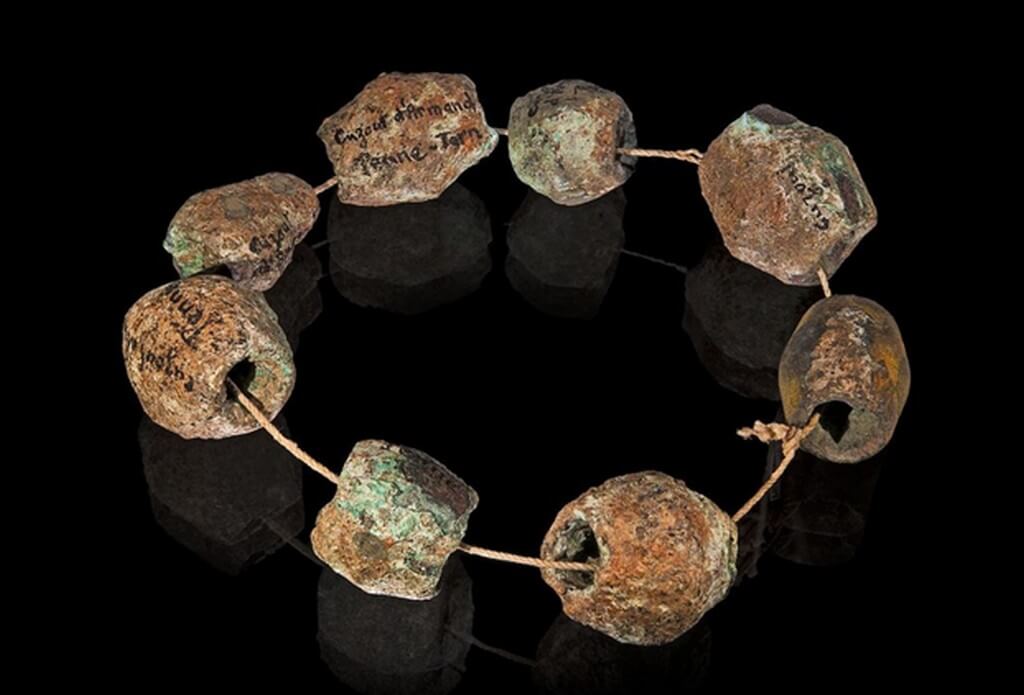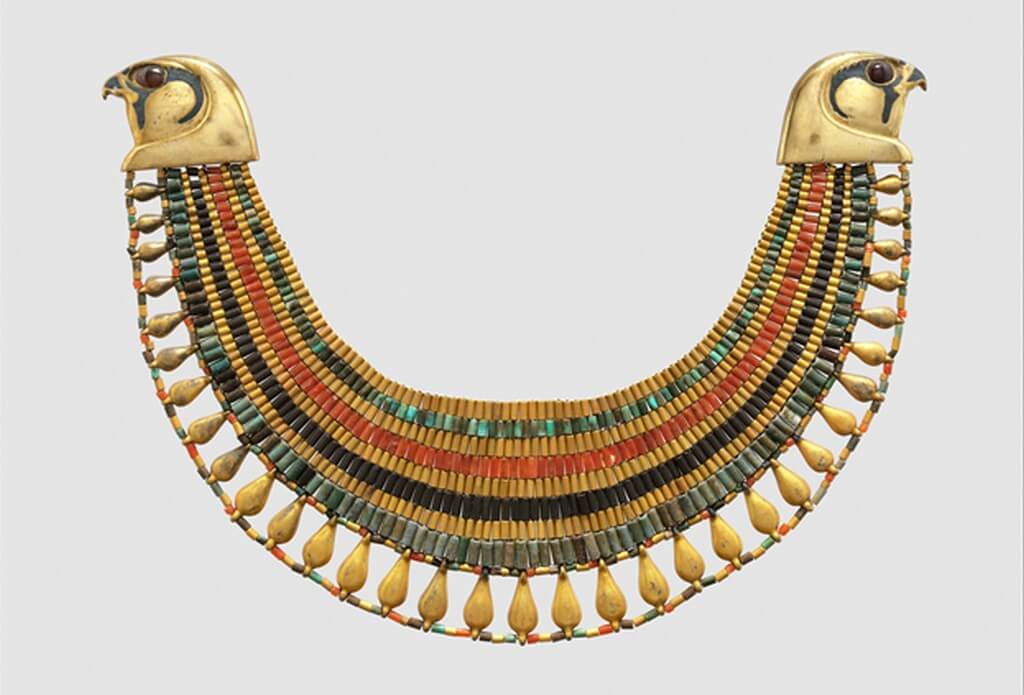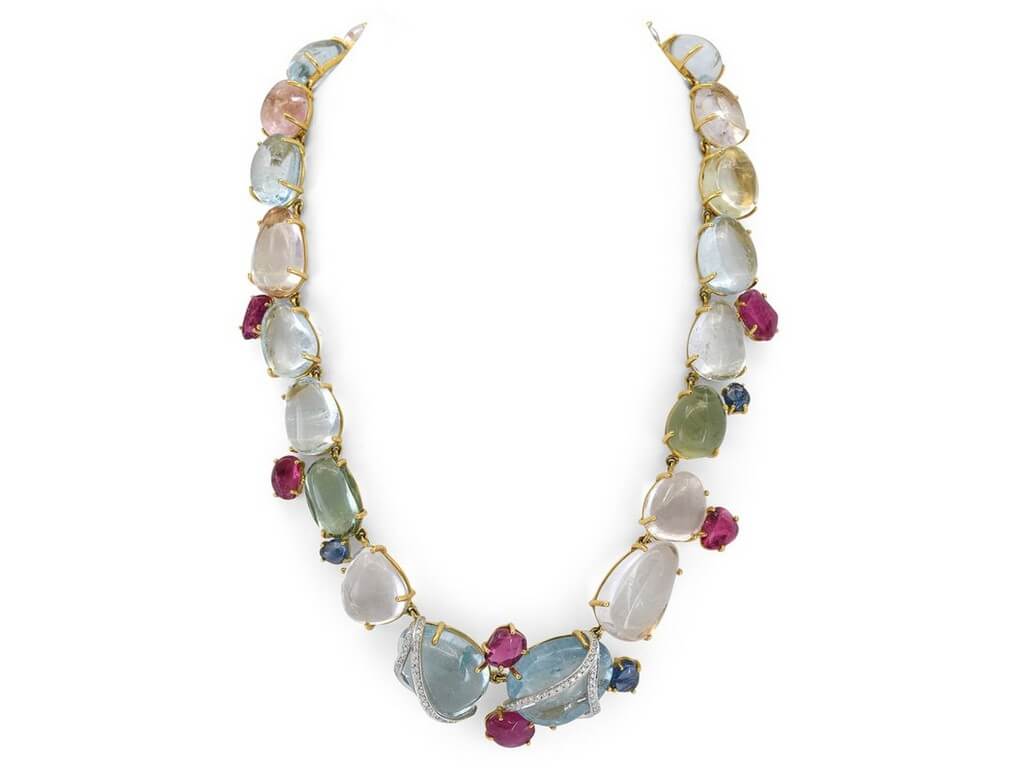Necklaces – A brief history
01/09/2021 2021-09-01 12:29Necklaces – A brief history
Necklaces can be trace to the stone age which is around 40,000 years. In April 2004, archaeologist while excavating a cave in South Africa discovered 41 mollusks that may have been once been part of neck jewellery. Prior to this discovery the oldest known necklace found dated back to about 30,000 B.C. These necklaces were mostly fashioned out of shells, bones, stones, animal teeth or claws, that were strung with a thread. The basic concepts to make necklaces are same, albeit few variations

Gold started being used in neck jewellery around 2500 B.C. The Royal Grave of Ur was the site for the discovery of gold neck adornments and gold chokers. They are in what is presently known as Iraq. In 2000 B.C. Sumerians started using alternate patterns of colored stones, gemstones and metals such as copper or silver for neck jewellery.
The Ancient Egyptian necklaces faced evolution from being simply strung beads to complex patterns which included the ‘broad collar’ and also pectoral type. These necklaces were adorned by both men and women from royal and wealthy strata of the society then. The deceased owners were often buried with their jewellery in those times.

During the Classical Greek period (480 to 300 B.C.) most necklaces were found to be three dimensional pendants which were commonly in the form of heads, seeds, or acorns. They were suspended from a row of flat elements usually some type of rosettes.
Gold was plentiful throughout the Greek Empire due to the conquest of the Orient by Alexander the Great in 356 – 323 B.C. For several centuries since, it was often used in creating necklaces and other types of jewellery.
However, in Ancient Rome wearing jewellery was frowned upon. There were Laws as to how much gold could be worn by women or how much gold could be buried along with the deceased. In Rome, jewellery began to distinguish itself from about the first century on. Then came the advent of gemstones which were cut in circles or rectangular shapes.
At the end of the second century there were invention in the techniques implemented in gold piercing techniques which produced a lace like quality in gold neck jewellery. The favored style at the time was a chain of made of varied colored gemstones which were connected by gold links.

In the second and third century wearing multiple necklaces all at the same time became popular. The types of neck jewellery were a mark of wealth or class of the wearer. Necklaces were very popular in whatever irrespective of the form. The popularity of wearing necklaces declined significantly over the next few centuries. Necklaces regained their popularity due to fashions décolletage in the late 14th century.
Since its comeback, necklaces have enjoyed popularity among people from all the classes. In current times necklaces are worn for a variety of reasons not necessarily as personal adornment. The reasons could be as diverse as wearing a necklace that has religious symbols It stands to reason that it can be said that necklaces have been and will remain a piece of jewellery that is completely versatile in its design and the intent of the wearer.
Necklaces may be worn for a varied number of purposes, but they are a mainstay in the current society, adorned for various functions and occasion as a style statement. Enroll in the 1-year Diploma in Fine Jewellery Design from one of the best jewellery design training institutes in Goa.













